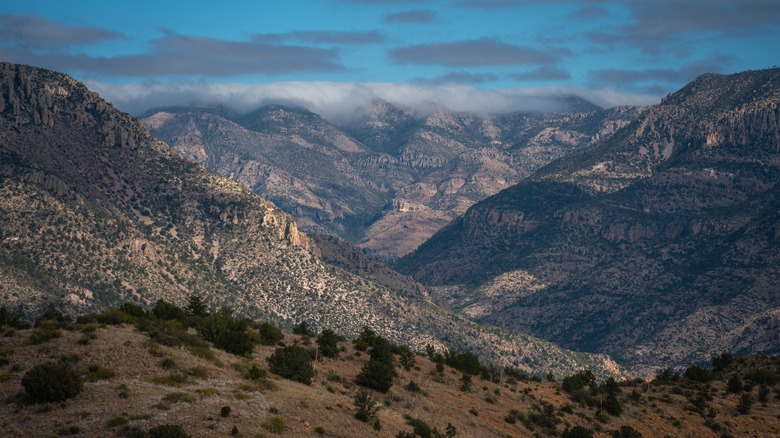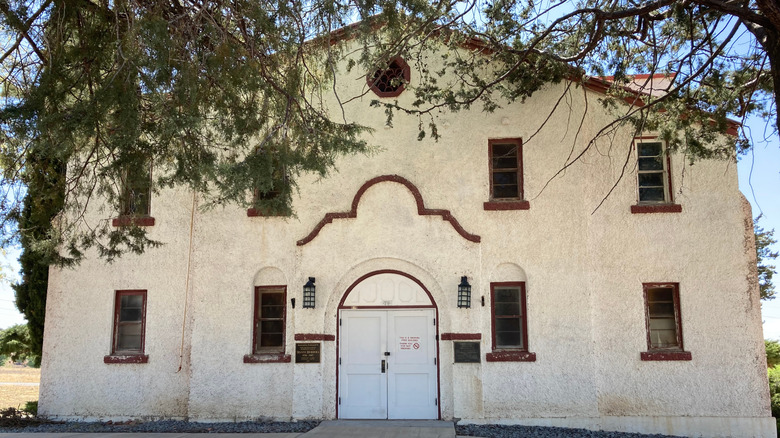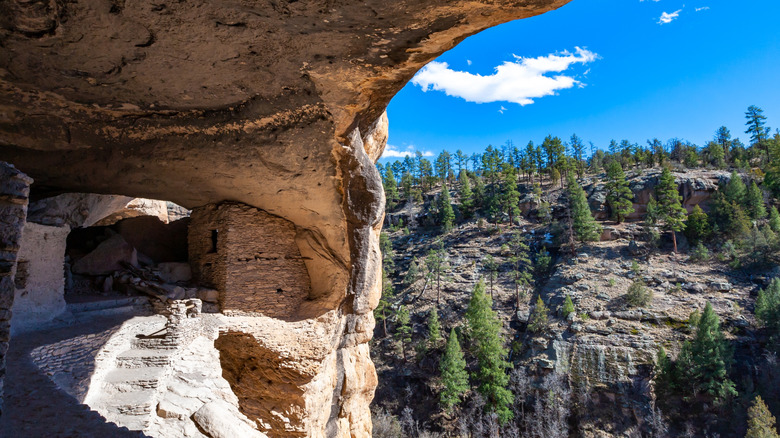Southwest New Mexico's Hidden Gem Has Easy Access To Gila National Forest With A Famous National Landmark
In the foothills of the first designated wilderness area in the United States is a small hidden gem with a big history. Located in Southwest New Mexico, the town of Bayard is perhaps most famous for its national landmark, Fort Bayard. Just 10 minutes outside of this town of almost 2,400 people, the fort overlooks the valley below.
Besides allowing visitors to travel into the past with a trip to Fort Bayard, Bayard also offers easy access to Gila National Forest, a spectacular area that's home to forests, desert landscapes, the longest free-flowing river in New Mexico, and an abandoned gold rush town filled with rusted relics. This national forest includes the Gila Wilderness, a pristine, untouched area where you can find bighorn sheep, elk, and wolves, plus hundreds of miles of trails bringing you through deep canyons. You'll also want to keep an eye out for hot springs and explore the cave dwellings that housed Mogollon people hundreds of years ago.
Bayard is only 15 minutes from Grant County Airport, a regional hub that has direct flights from Albuquerque and Phoenix with Advance Air. The closest major airport is Tucson, three hours away, while Albuquerque airport is just under four hours by car. Either way, it's best to have a car when exploring the area around Bayard, particularly if you plan to venture into the Gila National Forest.
The unexpected history of Fort Bayard
The most notable feature of Bayard is its eponymous fort located outside of the town, where you'll find a fascinating history. Fort Bayard opened in 1866 as a defense operation meant to protect miners and settlers in the area from the growing resistance of the Apaches, who were being pushed off the land they had been on for many years. But what set this fort apart were the men who served there: African-American soldiers, also known as "Buffalo Soldiers." Many of these men were ex-slaves and had fought in the Civil War, but because of the dangerous and violent environment of the South, they were sent to the newly settled Southwest to serve there.
At the end of the century, the fort was turned into the army's first tuberculosis hospital, and it operated as that until 1920. It then became a veteran's hospital from 1922 until the '60s. Walk through the original landscaped gardens meant to offer healing to tuberculosis patients in this fortress where history and nature meet. See the cemetery, nurses' quarters, cinema, and theater where army doctors and their families put on plays. The complex once housed over 70 buildings, and although some have been demolished, you can still see some of the mansions today.
The best way to see Fort Bayard is to join a guided tour, which take place Saturdays and Sundays from 10 a.m. to 2 p.m. and begin at the commanding doctor's home and museum on the west side of the parade ground. The Fort Bayard Historic Preservation Society also frequently hosts events around and at the site, such as movie screenings.
Exploring the Gila Wilderness
Bayard is less than half an hour away from from the Gila National Forest, but take your time on those winding mountain roads. Aldo Leopold, a forest ranger and conservationist, was the pioneer of wilderness preservation in the United States, and he fought to keep certain places in their natural state with minimal human imprints. He called it "thinking like a mountain," this idea of seeing the whole picture of an area's biodiversity, which would be greatly impacted by unchecked hunting and human presence. Leopold suggested the land around the Gila River as the country's first wilderness area, which the government put into law in 1924, 40 years before the national Wilderness Act of 1964.
Now, you can visit the Gila Wilderness along with the Aldo Leopold Wilderness, where you'll find slot canyons, year-round rivers, and desert valleys and experience what Leopold did a century ago in this place that blends the forests of the Rockies with the Mexican desert. Hundreds of miles of trails offer options for hikers and backpackers, or if you're looking to do a short trip, the Gila Cliff Dwellings are worth the tough one-mile round-trip hike. The Mogollon culture — prehistoric indigenous peoples — lived in these caves, where they built rooms and made pottery before leaving in 1300 CE, making the dwellings one of New Mexico's most enchanting ancient sites.
There's a reason why Leopold chose Gila as the first wilderness; as one Reddit user puts it, this is "one of those places that people think they can understand academically or remotely via the Internet, but in reality there is no way to fully grasp its vastness and loneliness and silence until it has swallowed you."


